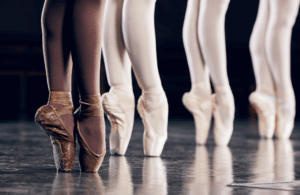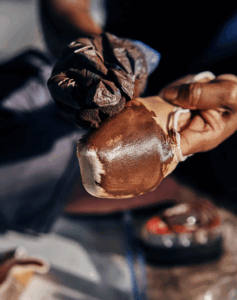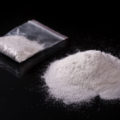
The color ‘ballet pink’ has been referred to for ages, whether it be related to your nail polish choice, bedroom walls or outfit of the day. What many people are unaware of is the true origins behind the color, and how this shade of pink continues to cast a veil of racism over the ballet industry. Black ballerinas deal with immense amounts of racial discrimination in the field, through a lack of representation on stage, microaggressions in the studio – and – the excessive struggle of finding and preparing dancewear that matches their skin tone.
Ballet has a deep European history. Emerging during the Italian Renaissance during the 15th century, the art was based on control – your feet, your turnout, your facial expressions. The discipline and patience required was universally believed as a “white” quality before the turn of the 21st century (Wu, 2022). ‘Ballet pink’, a rosy pastel blush, was quickly coined the standard color for ballet tights and shoes, as it matched the skin tone of the dancers: white. The match in color of dancewear with skin tone aids ballerinas in lengthening their lines, or how long and thin their limbs appear. It gives the illusion of being barefoot and bare-legged. Historically in this industry, the longer and thinner you appear, the better (Krigsman, 2025).

You would think, as the diversity of ballet grew, that the standard colors of its uniform would shift in order to compliment all skin tones. Unfortunately, this is not the case, and ballerinas of color continue to excluded. To achieve the same elongating look white ballerinas accomplish with the ‘ballet pink’ pointe shoes, brown and black dancers adopted a method termed “pancaking”, in which they coat the pink shoes in darker makeup or paint to change the color. Not only is this a laborious process, as an average pair of pointe shoes for a professional ballerina lasts only eight hours, but it also becomes extremely expensive. Ingrid Silva, a Brazilian dancer with the Dance Theater of Harlem, talked about her experience with pancaking with New York Times. She stated “The brand (of makeup) I use – Black Opal’s ebony brown – is $11 a bottle, and with that I can do three shoes.”. She goes through an average of two pairs of pointe shoes a week, meaning she would need to spend $770 a year on shoe makeup. With pointe shoes already costing an average of $65-$120 a pair, it is a lot of money (in an already low-paying industry) for dancers of color to achieve the same product that is regularly available for white dancers.
The first diverse flesh-toned pointe shoes weren’t created until 2017, by the company Gaynor Minden. In 2025, other major companies are still failing to catch on. Capezio, arguably the most popular dancewear brand, offers only two of their ten pointe shoes in darker shades. Bloch’s website, another large name in the industry, lists only eight brown pointe shoes out of forty seven. Suffolk, only eight out of forty five. Tene Ward, Australian corps de ballet member of the National Ballet of Canada, told Dance Australia “As much as we like to uphold traditions in ballet, we shouldn’t be upholding racism as a tradition”.







